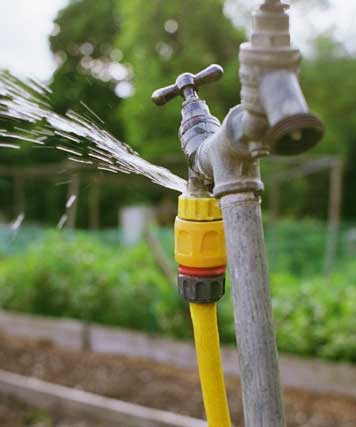Expose Concealed Water Line Leaks: Six Effective Detection Methods
Expose Concealed Water Line Leaks: Six Effective Detection Methods
Blog Article
We've encountered this great article involving Detecting hidden plumbing leaks below on the web and figured it made sense to share it with you on my blog.

The minute you find a leak, calling your plumber for repair services is the best service. Nonetheless, some tiny water leakages might not be visible. Below are some hacks that help if you can not identify it with your naked eyes.
Early detection of leaking water lines can alleviate a possible disaster. Besides conserving you cash, it will reduce the stress and also frustration.
Check Water Usage
If you identify abrupt adjustments, despite your consumption being the exact same, it indicates that you have leakages in your plumbing system. An abrupt spike in your costs suggests a fast-moving leakage.
At the same time, a steady boost each month, despite the exact same practices, shows you have a slow leak that's also gradually rising. Call a plumber to extensively inspect your building, specifically if you really feel a warm location on your floor with piping below.
Examine the circumstance and evaluate
Home owners need to make it a routine to check under the sink counters and also also inside cabinets for any kind of bad odor or mold growth. These 2 red flags show a leakage so timely attention is called for. Doing routine examinations, also bi-annually, can save you from a significant problem.
Check Out the Water Meter
Every residence has a water meter. Inspecting it is a surefire manner in which helps you find leakages. For starters, shut off all the water resources. Make sure no person will purge, use the tap, shower, run the cleaning maker or dishwasher. From there, most likely to the meter as well as watch if it will certainly change. Given that no one is utilizing it, there should be no motions. If it moves, that suggests a fast-moving leakage. If you identify no changes, wait a hr or two and also check back once again. This suggests you may have a sluggish leakage that could even be underground.
Asses Outside Lines
Don't forget to check your outside water lines also. Needs to water permeate out of the link, you have a loosened rubber gasket. One little leak can squander lots of water as well as surge your water costs.
Do a Food Coloring Test
When it concerns water consumption, 30% comes from toilets. Examination to see if they are running properly. Drop specks of food color in the tank and also wait 10 mins. There's a leakage in between the tank and also dish if the shade in some way infiltrates your dish throughout that time without flushing.
Inspect for stainings and damaging as many appliances and also pipes have a life span. If you suspect dripping water lines in your plumbing system, don't wait for it to intensify.
The minute you discover a leakage, calling your plumber for repair work is the ideal solution. Some small water leakages may not be noticeable. Checking it is a guaranteed way that assists you uncover leaks. One small leakage can waste heaps of water and surge your water costs.
If you think dripping water lines in your plumbing system, do not wait for it to escalate.
WARNING SIGNS OF WATER LEAKAGE BEHIND THE WALL
PERSISTENT MUSTY ODORS
As water slowly drips from a leaky pipe inside the wall, flooring and sheetrock stay damp and develop an odor similar to wet cardboard. It generates a musty smell that can help you find hidden leaks.
MOLD IN UNUSUAL AREAS
Mold usually grows in wet areas like kitchens, baths and laundry rooms. If you spot the stuff on walls or baseboards in other rooms of the house, it’s a good indicator of undetected water leaks.
STAINS THAT GROW
When mold thrives around a leaky pipe, it sometimes takes hold on the inside surface of the affected wall. A growing stain on otherwise clean sheetrock is often your sign of a hidden plumbing problem.
PEELING OR BUBBLING WALLPAPER / PAINT
This clue is easy to miss in rooms that don’t get much use. When you see wallpaper separating along seams or paint bubbling or flaking off the wall, blame sheetrock that stays wet because of an undetected leak.
BUCKLED CEILINGS AND STAINED FLOORS
If ceilings or floors in bathrooms, kitchens or laundry areas develop structural problems, don’t rule out constant damp inside the walls. Wet sheetrock can affect adjacent framing, flooring and ceilings.
https://www.servicemasterbyzaba.com/blog/how-to-detect-water-leakage-in-walls/

As a serious person who reads on Detecting hidden plumbing leaks, I was thinking sharing that piece of writing was smart. Feel free to take the time to promote this blog entry if you liked it. Thanks so much for going through it.
Start Now Report this page